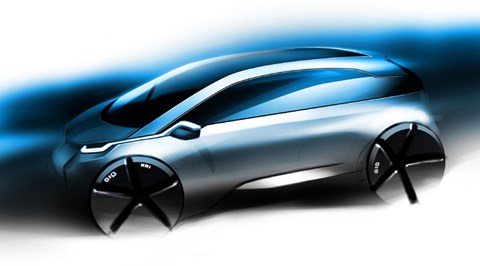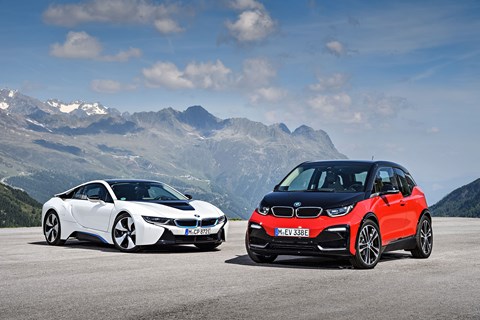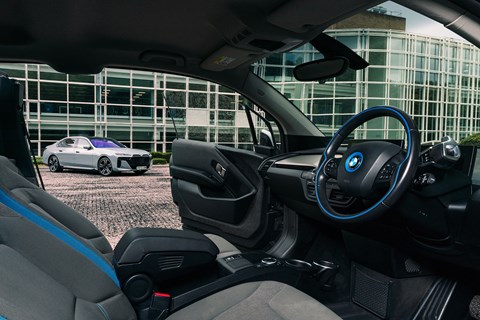► Revisiting the BMW i3 electric pioneer
► A decade on, why it still cuts the mustard
► Our i7 long-termer meets an early i3
An early BMW i3 passed through CAR HQ recently, providing the chance to reappraise this most innovative of BMWs from the modern era.
You can read the full story of when i3 met BMW i7 long-term test car in our Members’ website here, but the encounter got me thinking about how history will judge the think-different supermini.
Spawned from the Mega City Vehicle (MCV) project in the Noughties (below), the i3 reimagined urban transport for the electric era and set the maker of the ultimate driving machine on a different path: one that’s increasingly battery-powered and shape-shifting to break down traditional thinking.

This 2013 example is one of the very earliest sold in the UK and has done 41k miles in the past decade. It looks crisp, modern and contemporary, especially in this Storm Trooper white-on-black colour scheme. We really think that the stubby little i3 could be launched today and would still look futuristic – and that’s praise indeed.
i3 and i8: a new dawn for BMW
Project i spawned a pair of radically progressive cars in 2012: the i3 city car and i8 hybrid sports car. Here was Munich doing what it does best: pioneering designs and engineering innovation. The first i cars fast-forwarded us into an electrified future most motorists didn’t fully understand a decade ago, yet this progressive duo somehow kept the brand’s values remarkably intact with urgent performance and dynamic creds aplenty.

Engineering innovation underpinned everything: they used carbonfibre composites in their construction to save weight and provide a stiff platform from which to hang the suspension. It’s no surprise that both i3 and i8 steered, rode and changed direction as well as the best contemporary BMWs (the i3 could even out-drag a period M3 from 0-30mph, remember).
That expensive engineering solution was was also the reason both cars were quietly retired (the i3 as recently as last year), owing to their relatively high production costs.
What the i3 says about modern BMW
My encounter with the i3 underlined just how radical Project i was. It didn’t merely shoehorn new powertrains into the 3-series or chisel the bodywork on an X5 to create a new bodystyle. It was ground-up fresh thinking, a proper clean sheet.

The learnings may survive in the next tranche of electrified BMWs, but the spirit is diluted, a point underlined by the awkward-looking i7 and its reliance on gadgetry and overcomplicated digital ecosystems. I crave a generation of BMWs that push the boundaries again: cars that fuse technical innovation with design élan, pioneers that eschew the crowds to seek a more enlightened way forwards.
The i3 deserves to be remembered as an arch innovator. Let’s hope the forthcoming BMW Neue Klasse successors can do the same.
Don’t miss our full BMW i3 vs i7 comparison in our Members’ website here